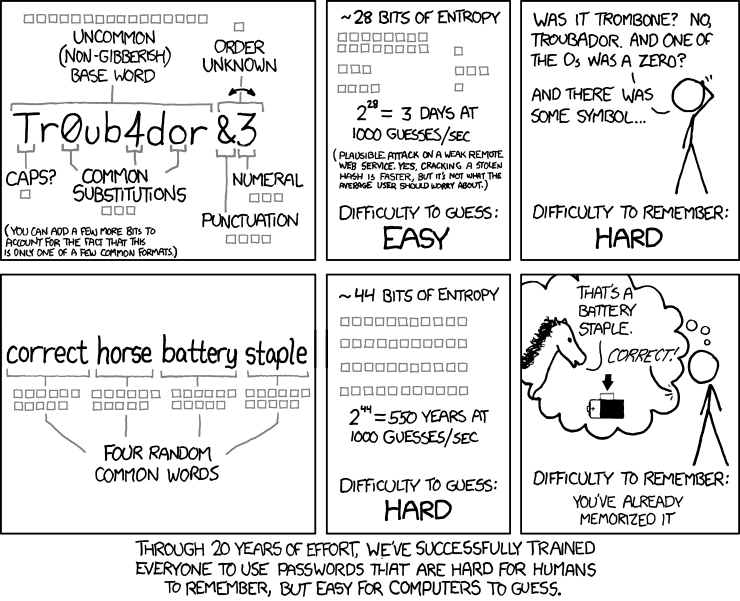Ah, I forgot to mention that you can ask for help on https://discourse.nixos.org/ , you’ll get better reach there. It has helped me a lot since I started with nix
unhinge
- 5 Posts
- 20 Comments
I lookup for the package here https://search.nixos.org/packages? I can find multiple versions.
It’d help if you mentioned the package itself.
two that sound right, two sound like rubbish and one is a plugin for something. How do I decide which of the two good sounding packages I should choose
Let’s say you wanted to install neovim, there are many similar packages available, viz. neovim, neovim-gtk, neovim-qt, etc. they all have description and most packages have link to homepage, hinting their purpose. But you can ignore *-unwrapped packages if you are not packaging yourself.
What if the package or even both not work?
This seems like packaging problem, most of the time it works. If not, notifying the maintainers via issues could help or you’ll have to fix it for yourself or use other package manager.
How do I know that it is up to date?
Go to package homepage if available and check their releases and compare them with version shown on search.nixos.org. If homepage is not available, go to source and get the url from src attribute and check the original source and compare with version shown on search.nixos.org.
How do I know that it will be updated in a timely manner? Can I update it?
You can check the commit history for the “source” file. Also you can update it yourself. If you’re lucky and know nix, then you’ll only have to update the url/version and hash like here.
is there a guideline for using nix packages?
you can checkout https://nixos.wiki/wiki/Nix_command and may be https://nix.dev/manual/nix/2.18/. Unfortunately I can’t find an comprehensive guideline for begineers. Others can chime in if they know.
Notice about experimental features nix-command and flakes.
If you see documentations other official sources, most often they’ll use flakes/nix-command but since they’re not officially stabilised (not as in broken) yet, documentation/blogs may vary. This can be quite frustrating if you don’t know about it.
Without flakes/nix-command, to install (let’s say) neovim on non-NixOS distro
nix-env -iA nixos.neovim, you can see that when search on search.nixos.org and click on the required packages, then choose one of the three tabs: nix-env, nix-shell or NixOS-configuration.nix-env installs the packages in your user environment, you can rollback and stuff.
nix-shell downloads the package and spawns a new shell (your shell prompt changes to [nix-shell]:) and you can use the package there and package won’t be installed. This is good for trying packages before installing.
For using flakes/nix-command, first you’ll have to enable them otherwise you’ll get this error
$ nix shell nixpkgs#neovim error: experimental Nix feature 'nix-command' is disabled; use '--extra-experimental-features nix-command' to overrideyou can append
--extra-experimental-features nix-commandto the above commandnix shell nixpkgs#neovim --extra-experimental-features nix-commandand it’ll work temporarily.OR
Append this line
experimental-features = nix-command flakesto /etc/nix/nix.conf to enablenix-commandandflakes.nix shell nixpkgs#neovimis equivalent tonix-shell -p neovimthough in the former it’s using nixpkgs-unstable branch of github.com/nixos/nixpkgs.nix profile install nixpkgs#neovimis equivalent tonix-env -iA nixos.neovimthough it’s said to stop using nix-envPS: This could be more comprehensive, my writing skills are shit lol
I think you mean registers not buffers. buffers are file(s) loaded in memory while registers contain text yanked/deleted/last command/last search, etc.
You can see all registers in use with
:registers, to paste from a register say"2in insert mode use key combination2or in normal mode"2p. You can check out more in:help registers. Unnamed register or""is the system clipboard I think. To copy texts in a register you can prepend yank (/delete/cut, etc.) with that register"_(for black hole register[1]) This is for neovim. Have keybinds for them and there saved you a plugin :D
Text yanked in this register is gone, i.e. it’s not saved in any register. ↩︎


Secondly, the dotfiles. I hear there is the Home Manager for that, but it doesn’t have support for everything
In this case, you can use
home.fileoption of home-manager similar toenvironment.etcof NixOS configuration.For example, let’s configure dunst with home-manager [1]:
In case home-manager doesn't support it:
# installing the package home.packages = [ pkgs.dunst ]; # configure dunst ## writing new config home.file.".config/dunst/dunstrc" = { text = '' [urgency_critical] timeout = 15 ''; }; ## using existing config home.file.".config/dunst/dunstrc".source = "/path/to/existing/dunst/config";If home-manager supports:
services.dunst = { enable = true; # using existing config configFile = "/path/to/existing/dunst/config"; # new config settings = { urgency_critical = { timeout = 15; }; }; };Is there a way to manage everything at the same time?
Yes, create a git repo and keep your configuration there. Don’t keep secrets unencrypted in there as those will end up in world readable /nix/store. Any user where system or human can access those. You can use any scheme to manage secrets at wiki[2].
Even better if everything is in configuration.nix
You can do everything in single file but I wouldn’t recommend it as configuration may grow quickly and be difficult to manage later. Instead you may split the configuration.nix into multiple files and import those in configuration.nix.
Flakes simply helps to manage the inputs easily (e.g. nixpkgs, home-manager), i.e., which version of input your config uses. Traditionally inputs is managed by nix-channel imperatively. It generates flake.lock to store the hash of inputs which won’t be updated unless you update it. If you copy the config between different machines (or reinstall), you’ll get exact same version of packages. It also helps avoid adding nix-channel, which you have to add manually during reinstall and you may not get the same version of packages. So, it’s not important as you can do all things with/without it.
I found this guide [3] quite helpful to start with flakes. You may use one of Misterio77’s starter configs[4]. Also, a big surprise with flakes is that if you don’t use git, then your all files from config dir will end up in /nix/store (world-readable[5]) [6] [7]. So, you should use git with flakes that way only commited files will end up in /nix/store(world-readable).
https://nix-community.github.io/home-manager/options.xhtml ↩︎
https://nixos.wiki/wiki/Comparison_of_secret_managing_schemes ↩︎
By world-readable, I mean any service or program can access those files ↩︎
https://discourse.nixos.org/t/flakes-without-git-copies-entire-tree-to-nix-store/10743 ↩︎
Then, what does a package maintainer rely on?Edit: I’m so dumb. It’s obvious they’d check original developer’s repo or issue tracker. I’m sorry


You are right. I shouldn’t have used diff. I’ll fix that
Also, incremental changes from subvolume to its snapshot might be incorrect as that will be new data added to subvolume, rather that old data deleted from subvolume while still present in snapshot. I’ll have to check carefully.


just comparing the subvolume with its snapshot with
btrfs send -p /example/subvol /snapshot/of/example/subvol >examplediff.btrfs.From
man btrfs-sendgenerate a stream of instructions that describe changes between two subvolume snapshots
Thanks for btdu, it seems useful as ‘btrfs fi du’ probably doesn’t account for compression, will check it out sometime.


Thanks that helped. I have one snapshot of home.
Size of diff between btrfs subvolume andAdditional space used by snapshot is 11GiB (probably) andbtrfs fi du -s /is 72GiB, making 83GiB (closer tobtrfs fi df /).


Between
btrfs filesystem usage /andbtrfs filesystem du -s /there’s nearly 11GiB difference for used space.I have checkedbtrfs du -hsfor all subvolume in the filesystem, and total seems to be 72 GiB, hence the confusion. Still I don’t know if I’m using the tools properly or something else is at fault here.To correct myself, 11GiB is additional space used by snapshot probably
used space difference between. Sobtrfs fi usageandbtrfs fi du -s /is because of diff between snapshot and parent volume (didn’t consider that while adding all used GiB of subvolumes)btrfs filesystem usageworks well to check used/free space.edit: fix incorrect args; additional space is not diff
user’s password can be totally different from luks password if you’re using autologin. You can keep it same but that’s totally optional. You can login without entering any password at all if not using luks (or using autodecrypt), you can see that in live isos.
oh, I forgot. Thanks for mentioning that :)
I have no idea what TPM is
Read Skull giver’s reply or look it up.
Re-reading your post, I take you want to avoid typing long and tedious password? And that’s why you want to auto-decrypt?
- (Recommended) You could use strong memorable passwords that are not difficult to type and enable autologin. Related xfcd comic:

- systemd-cryptenroll: For TPM usage, I highly recommend using secure boot. Though not sure if you can easily do that. A less secure alternative using systemd-cryptenroll would be use tpm2-pin and bind key to no pcrs (discouraged). But then you’ll have to use luks2 for encryption.
Notice from
man systemd-cryptenrollregarding tpm2-pin:
Note that incorrect PIN entry when unlocking increments the TPM dictionary attack lockout mechanism, and may lock out users for a prolonged time, depending on its configuration. The lockout mechanism is a global property of the TPM, systemd-cryptenroll does not control or configure the lockout mechanism. You may use tpm2-tss tools to inspect or configure the dictionary attack lockout, with tpm2_getcap(1) and tpm2_dictionarylockout(1) commands, respectively Also tpm2-pin is not disk encryption password and short alphanumeric password needed so tpm decrypts the device; so encryption password should be secured in a safe place. Also check if your distro supports systemd-cryptenroll.
-
usb drive: read previous comment
-
clevis: It probably isn’t as simple as systemd-cryptenroll but I guess you can use zfs and combine that with tpm2-pin if not using secure boot (discouraged).
You’ll have to make a compromise somewhere between security and convenience. Even if you use pam mount, you’ll have to enter the password, biometrics won’t do.
Edit: remove unnecessary user tag and add img uri
Assuming you want:
- Single password prompt instead of auto-decrypt with tpm
- User’s files to be encrypted
There are several ways to achieve this:
-
autologin (recommended for single user system): / is encrypted using luks or zfs native encryption and user’s home needs to be unencrypted. User’s password may be same as encryption password for convenience, though they still are two passwords used for different purposes.
-
pam mount: / is unencrypted or auto-decrypted and user’s home is encrypted independently from / using zfs,luks,fscrypt,etc. In this case, user’s login password must be same as user’s home encryption password. It’s suitable for multi-user system. NOTE: It cannot be used with autologin since user’s home needs to be decrypted to log in.
WARNING: For tpm usage, using secure boot is highly recommended to prevent unauthorized user from accessing key stored in tpm.
To prevent auto-decrypt with tpm, tpm-pin can be used (with autologin for requirement #1).
-
systemd-cryptenroll with/without tpm: As far as I know it can be only used to unlock disk encrypted with luks2. It can be used without tpm with pkcs11-token (e.g. YubiKey) or fido2-device. It also uses parameter encryption while key is unsealed, so safe from key sniffing via communication bus. This is easy if secure boot is enabled and luks2 is used for encryption.
-
clevis with tpm: It can be used in place of systemd-cryptenroll. May be used with zfs native encryption. Though I’m not sure if it uses parameter encryption (correct me).
-
unencrypted keyfile on usb: Not sure about zfs, but you can use keyfile on a usb drive to decrypt luks containers.
NOTE: I’m not a forensic/security expert. I listed a brief overview of methods I could think of to keep user’s files encrypted while providing single password till login.
if you happen to find the comparison, could you link it here
afaik openzfs provides authenticated encryption while luks integrity is marked experimental (as of now in man page).
openzfs also doesn’t reencrypt dedup blocks if dedup is enabled Tom Caputi’s talk, but dedup can just be disabled
that sounds good.
Have you used luks integrity feature? though it’s marked experimental in man page
oh shit I forgot to set up subvolumes
lol
I’m also planning on using its subvolume and snapshot feature. since zfs also supports native encryption, it’ll be easier to manage subvolums for backups
I won’t be using RAID features as of now, and timeshift isn’t an issue for me. just an example of my fuckup 😅
I’ve been using luks on btrfs for a couple years now with little issue
What was the issue?


open an issue I guess? I’m not sure